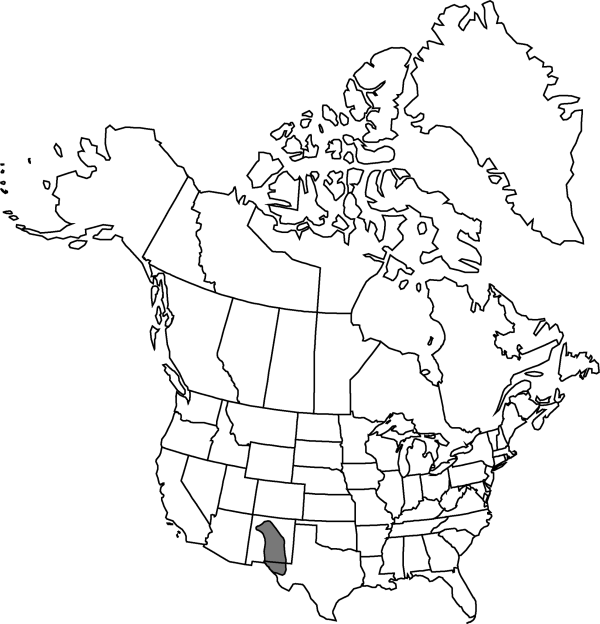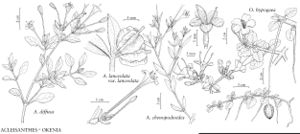Acleisanthes lanceolata var. lanceolata
Plants herbaceous or basally woody, lightly pubescent, hairs appressed, mostly retrorse, white, flattened, minute. Stems erect or decumbent, densely leafy, 10–50 cm. Leaves grayish green when fresh or dry, sessile or petiolate, those of a pair slightly unequal, gradually reduced toward inflorescence, thick and succulent; petiole 0–3 mm; blade lanceolate to broadly ovate, 12–40 × 4–13 mm, base obtuse or ± cordate, margins entire, apex acute or obtuse. Flowers 1(–2) in axils of distal leaves; pedicel 0–1 mm; perianth 30–42 mm, tube pale greenish, limbs cream or pale yellow, 10–15 mm diam.; stamens 5(–6). Fruits 6–9 mm, publerulent with flattened, white hairs; wings 2–4 mm wide.
Phenology: Flowering late spring–early fall.
Habitat: Gypsum hills and flats
Elevation: 1000-1900 m
Distribution

N.Mex., Tex., Mexico (n Chihuahua).
Discussion
On average, Acleisanthes lanceolata leaves increase in breadth along a north-to-south gradient. B. A. Fowler and B. L. Turner (1977) recognized this variation at the varietal level, establishing Selinocarpus lanceolatus var. megaphyllus B. A. Fowler & B. L. Turner, a taxon restricted to gypsum outcrops in Chihuahua. In 1993, Turner revisited the complex, recognizing the Chihuahuan variety as S. megaphyllus (B. A. Fowler & B. L. Turner) B. L. Turner and established S. maloneanus (later reduced to varietal status) for populations in western Texas and northeastern Chihuahua, which have leaves averaging somewhat broader than those of var. lanceolatus. The perianth differences noted are variable. The “megaphyllus” phase is notably different from the “lanceolatus” phase. In at least some of the populations of S. megaphyllus, however, plants with typical “lanceolatus” foliage occur along with plants intergradient to broader-leaved forms. For this reason, Fowler and Turner’s approach of treating variation in the group at the varietal level is followed here. R. A. Levin (2002) did not recognized any varieties.
Selected References
None.
